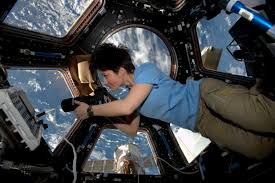
Managing menstruation in space presents unique challenges due to microgravity, limited hygiene facilities, and waste disposal constraints. Female astronauts employ various strategies to address these issues effectively.
1. Menstrual Suppression through Hormonal Contraceptives
Many female astronauts opt to suppress menstruation during missions using hormonal contraceptives. Continuous use of birth control pills, where active pills are taken without a break, effectively prevents periods. Long-acting reversible contraceptives (LARCs), such as intrauterine devices (IUDs) and hormonal implants, are also popular choices due to their extended effectiveness and minimal maintenance requirements. These methods reduce the need for menstrual hygiene products and simplify waste management in space.
2. Physiological Effects of Microgravity on Menstruation
Initial concerns suggested that microgravity might adversely affect menstruation, potentially causing retrograde flow. However, studies have shown that menstruation occurs normally in space, with no significant physiological differences compared to Earth. Astronauts have reported no menstrual problems during missions, confirming that the absence of gravity does not impede the menstrual process.
3. Hygiene and Waste Disposal Challenges
Managing menstrual hygiene in space is complicated by limited access to water and sanitation facilities. Traditional menstrual products like pads and tampons require proper disposal, which is challenging aboard spacecraft. The international Space Station (ISS) has waste management systems primarily designed for urine, making the disposal of menstrual waste problematic. These challenges further incentivize the use of menstrual suppression methods during missions.
4. Personal Choice and Preparation
The decision to suppress menstruation is ultimately a personal choice for each astronaut. nasa and other space agencies provide education and resources to help female astronauts make informed decisions about menstrual management. Some may choose to continue menstruating, while others prefer suppression for convenience. Regardless of the choice, thorough preparation and planning are essential to ensure comfort and hygiene during space missions.
In summary, female astronauts manage menstruation in space through a combination of hormonal suppression, careful planning, and personal choice. These strategies address the unique challenges posed by the space environment, ensuring that menstruation does not hinder the success of space missions.





 click and follow Indiaherald WhatsApp channel
click and follow Indiaherald WhatsApp channel